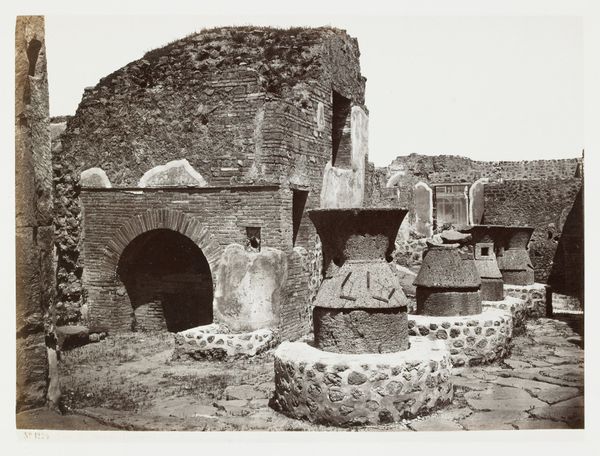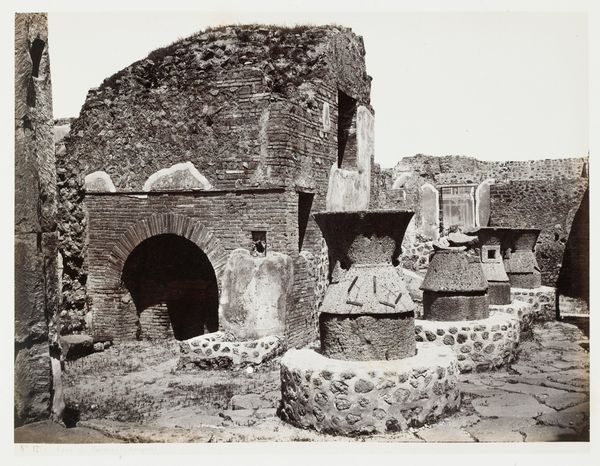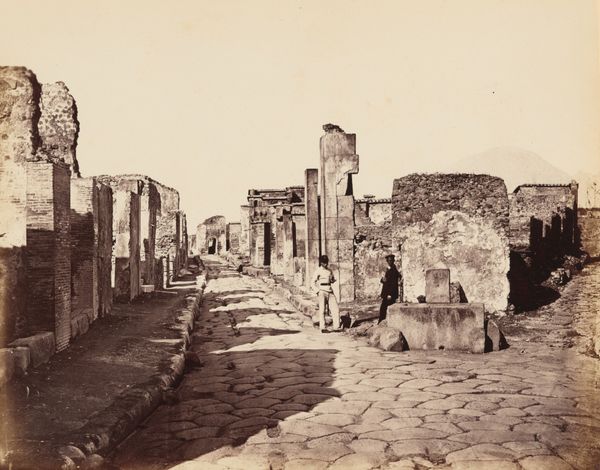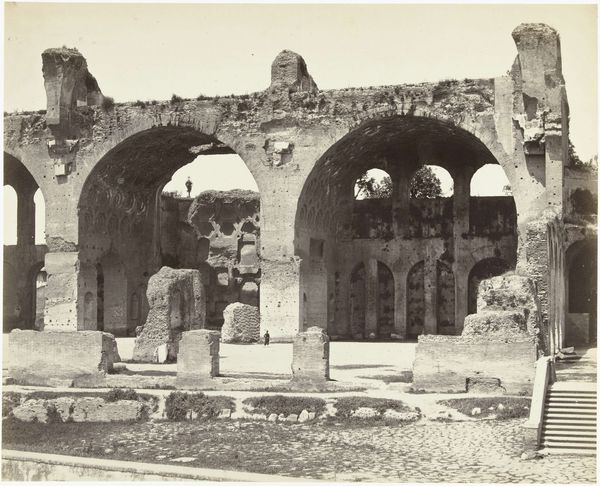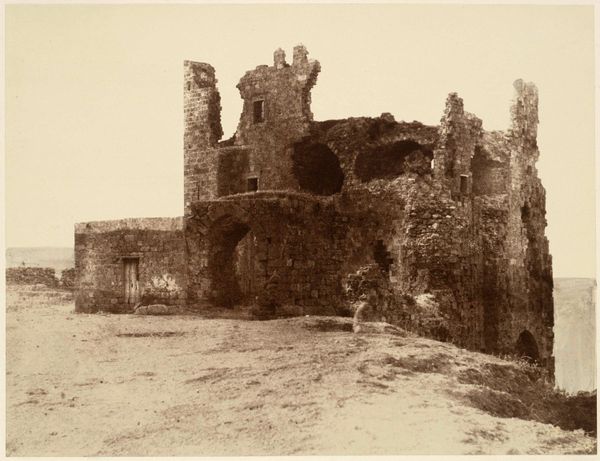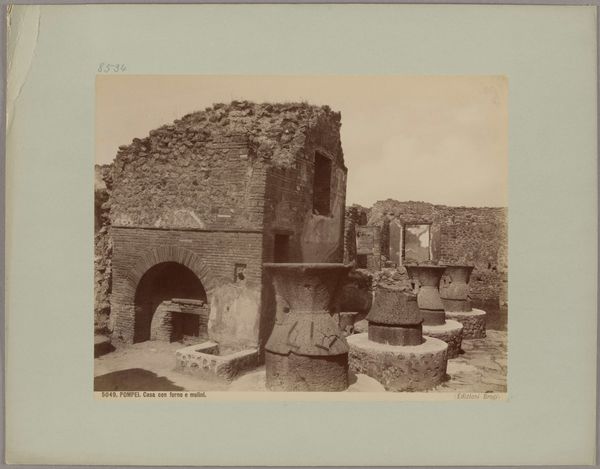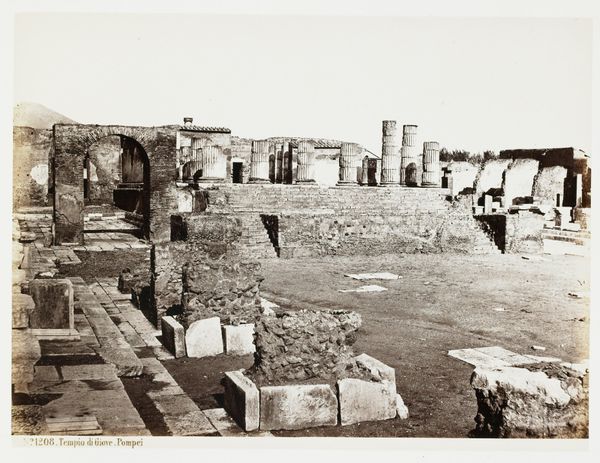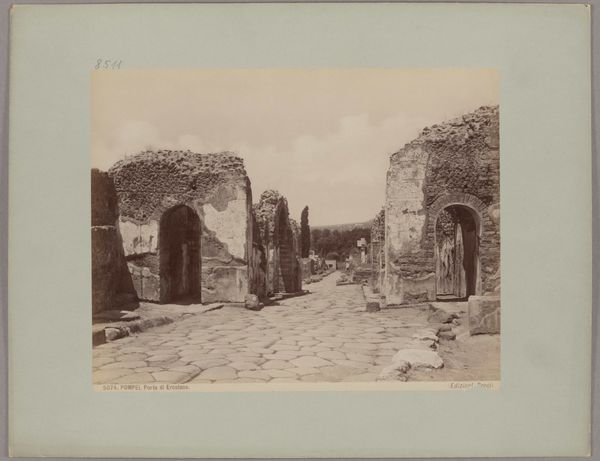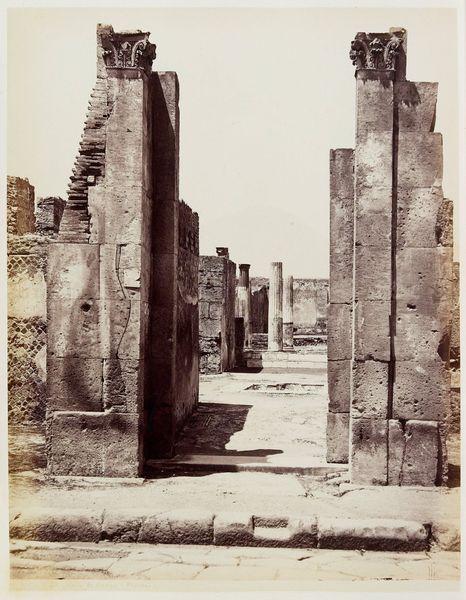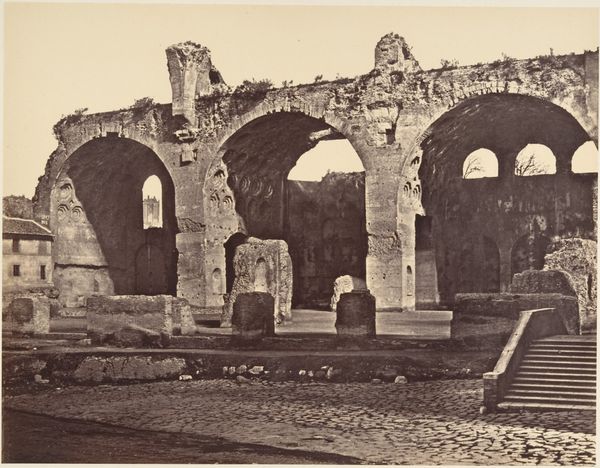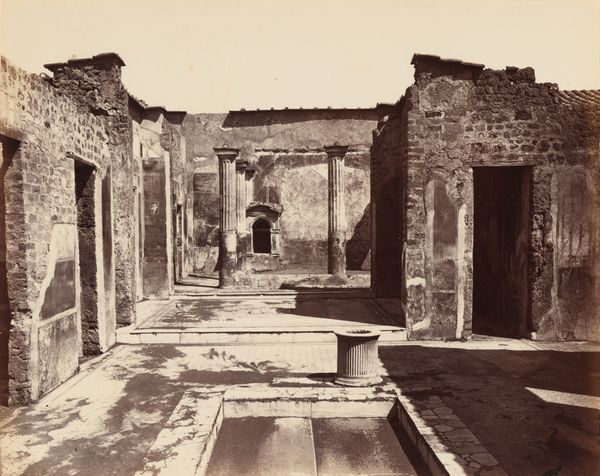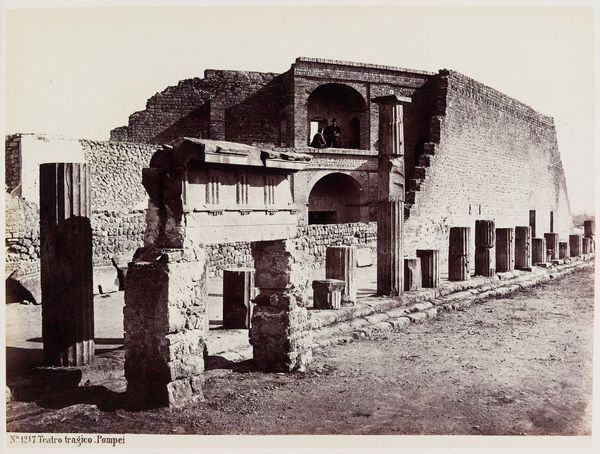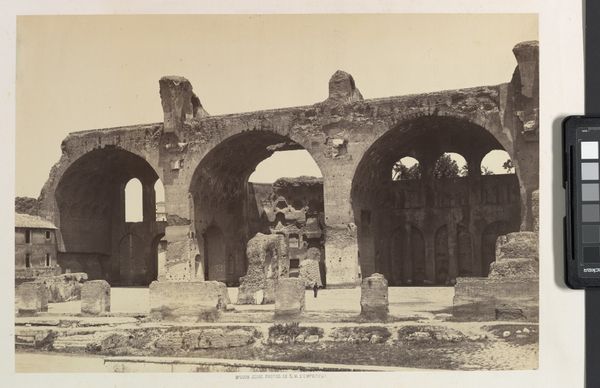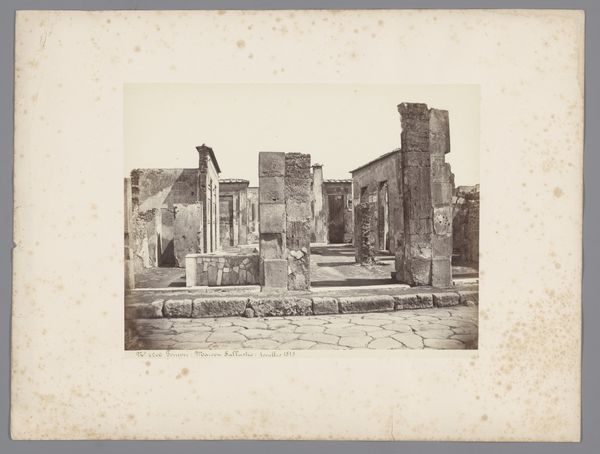
albumen-print, photography, albumen-print
#
albumen-print
#
portrait
#
landscape
#
photography
#
ancient-mediterranean
#
cityscape
#
italy
#
albumen-print
Dimensions: 6 15/16 x 9 13/16 in. (17.62 x 24.92 cm) (image)
Copyright: Public Domain
Editor: Here we have Giorgio Sommer's "Porta d'Ercolano," an albumen print from the 19th or early 20th century. The photograph presents a ruined street in what appears to be Pompeii. The stark light and composition almost make it feel like a stage set. What are your initial thoughts? Curator: Immediately, I’m struck by the formal arrangement. Notice how the photographer uses the converging lines of the ancient Roman road to create a strong sense of perspective. The framing established by the ruined archways act as both a foreground and a lens. Observe the interplay between light and shadow. Editor: It is very dramatic. I'm curious about the figures; how do they function within this composition? Curator: The two figures introduce a sense of scale. Note how their dark silhouettes are strategically placed to anchor the composition. They create an opposition, and thus enhance the subject of antiquity, emphasizing its impressive presence but simultaneously contrasting to the remnants of a lost time. Are we viewing this image as if watching a theater production? The figures become mere actors or props in the urban decay. What semiotic readings are implied in such presentation? Editor: So, by emphasizing the structure and composition, the photograph is not only a record, but a very deliberate commentary on history and time? Curator: Precisely. Sommer is less concerned with a documentary approach than he is with using the ruin as a signifier. He emphasizes certain inherent elements and excludes others, focusing on shape and structure to convey the power and enduring quality of Roman architecture, despite its current dilapidated condition. Editor: That's fascinating. I initially saw it as a straightforward landscape, but your analysis reveals the complex structural intentions at play. Curator: And your initial reaction demonstrates how immediate the subject matter can be. Bringing the emotional content into discourse helps decode intention and reception in the act of viewing. Editor: This perspective is really enlightening. Thank you for expanding my understanding of photographic formalism. Curator: My pleasure. It is through these types of investigations that artworks transcend the material to embody thought.
Comments
No comments
Be the first to comment and join the conversation on the ultimate creative platform.
